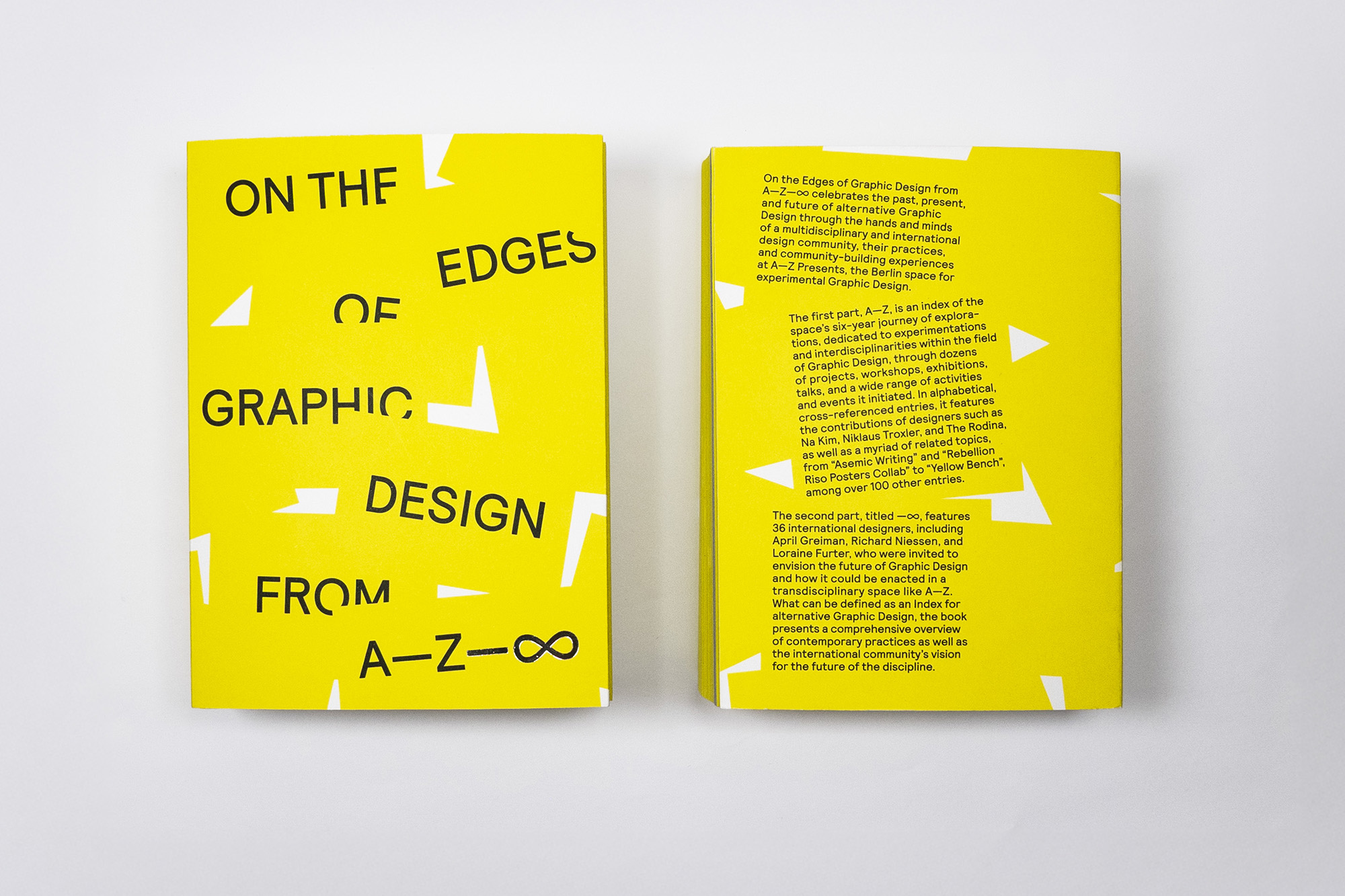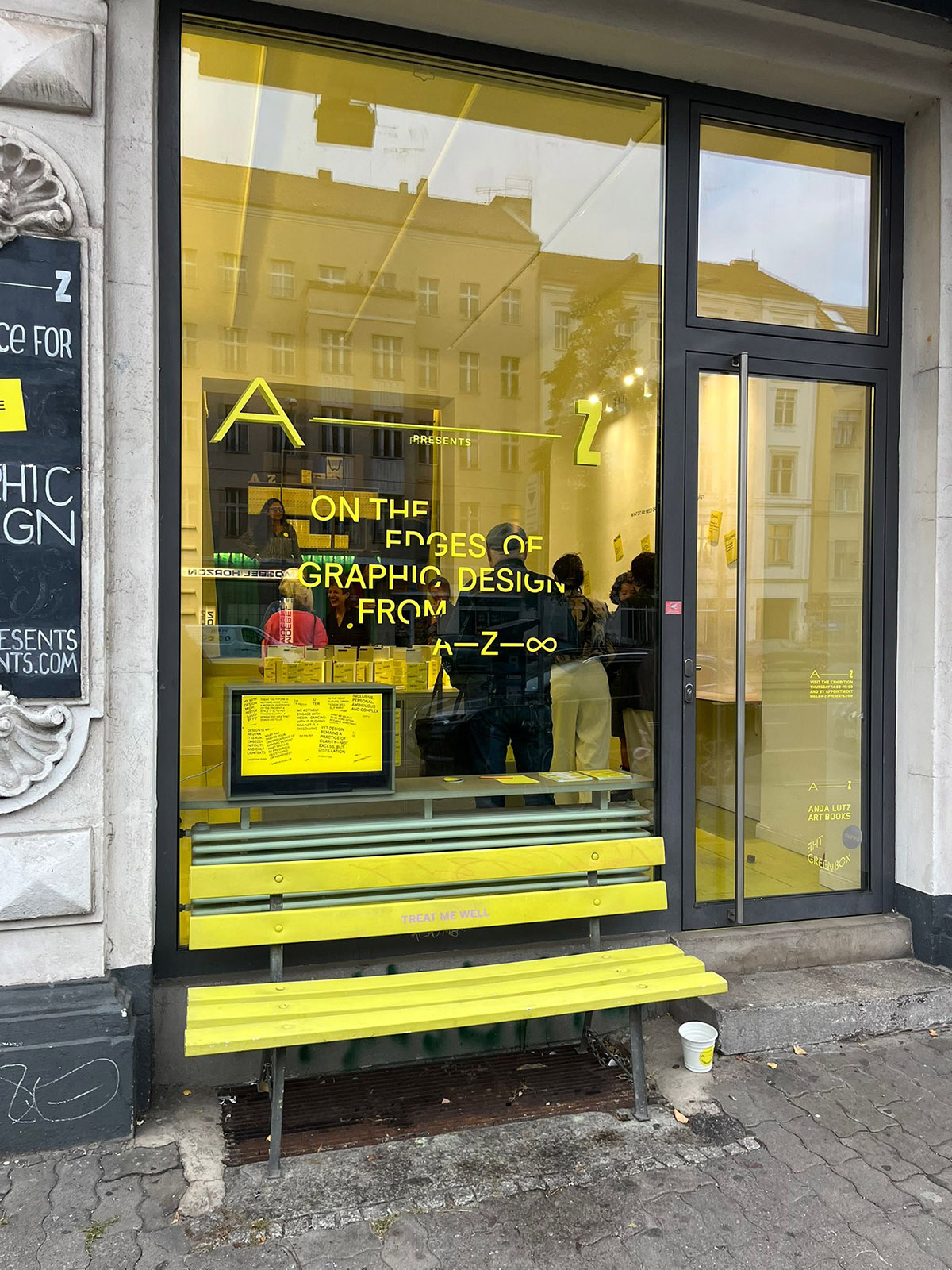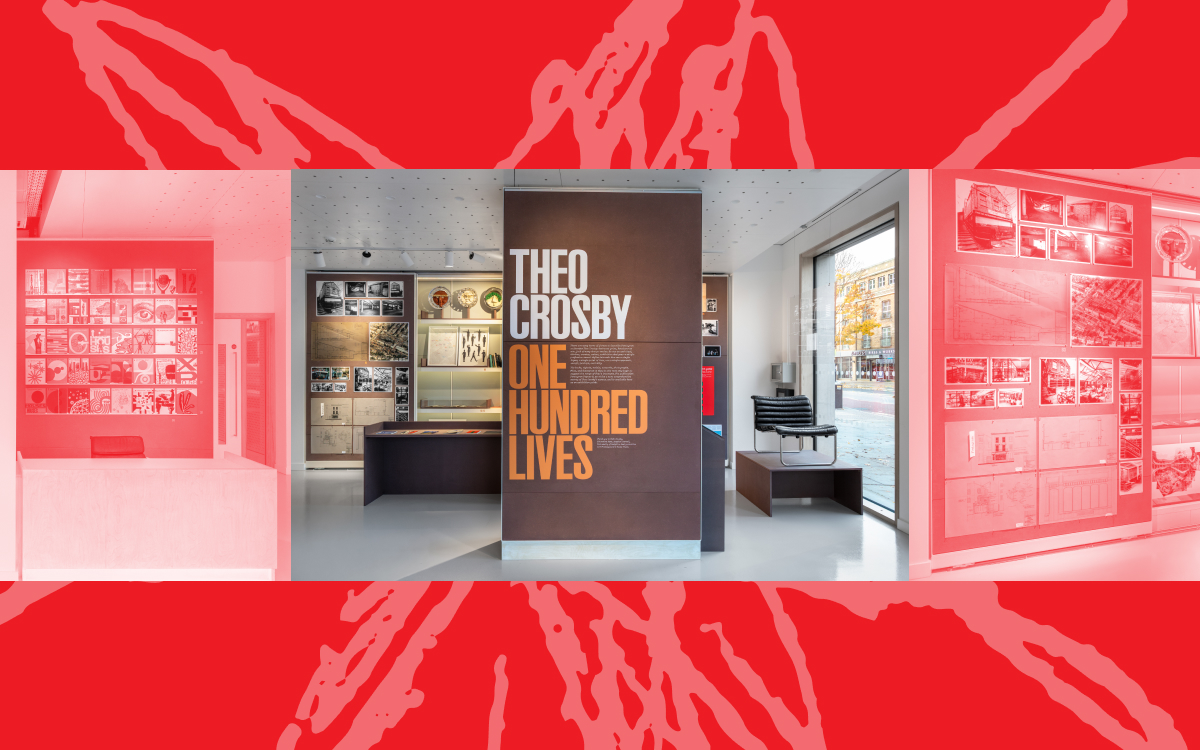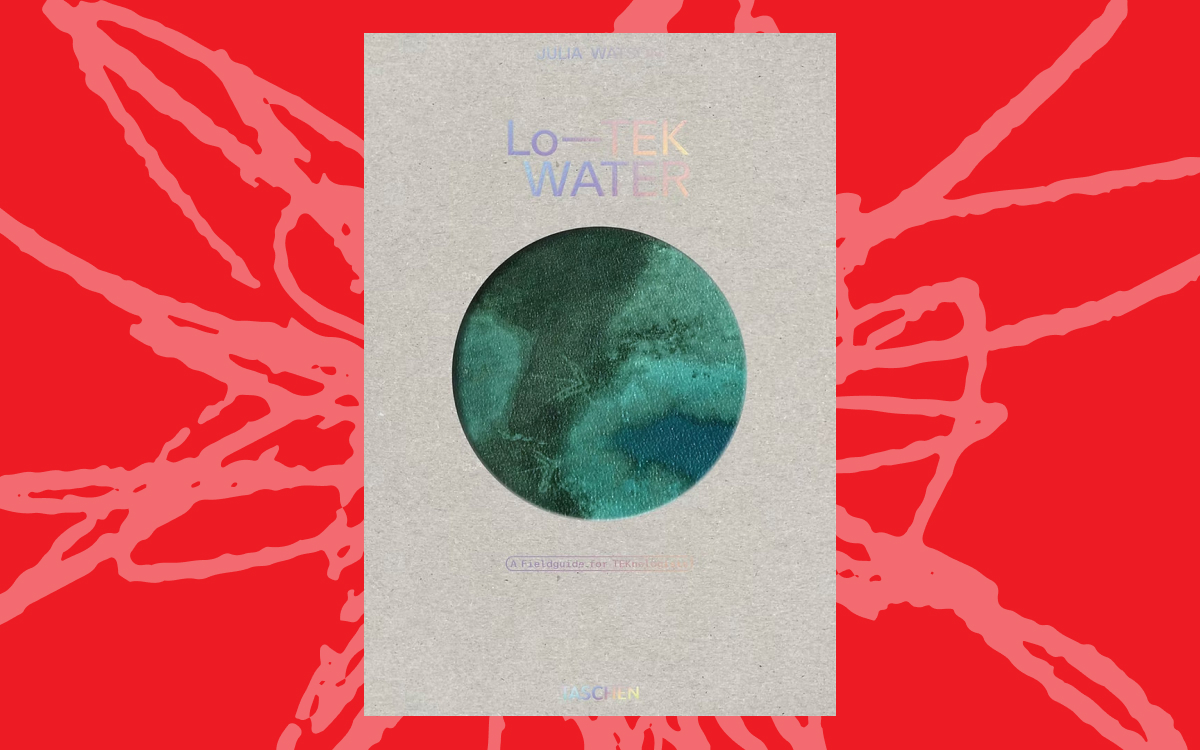A—Z is a Berlin-based space for experimental graphic design founded in 2019 by Anja Lutz where the graphic design community could express and expand the definitions and boundaries of graphic design together. Over the last six years, they’ve hosted talks, workshops, and other events and feature contributions that range from print and digital media to performance and film. Now, the work showcase in that space is being made available in a new book from Set Margins called On the Edges of Graphic Design from A—Z—∞. Taking the form of an index of alternative graphic design, the book not only offers a comprehensive view of the activities at A—Z but also looks ahead by inviting a group of international graphic designers to imagine the future of the graphic design discipline. We are honored to publish here an exclusive excerpt from the book, a conversation between Lutz and Set Margins’s publisher Freek Lomme about A—Z and what we mean when we talk about experimental design. —Jarrett Fuller
FREEK LOMME: We have been doing very similar work. I am curious to know what motivated you to put the idea of A—Z in motion?
ANJA LUTZ: Throughout my career as an art book designer, I have always been attracted to a certain practice of Graphic Design that crosses genres and that pushes boundaries and there have also been many individuals who have inspired me with their unorthodox approaches.
Then, in 2019, when we relocated The Green Box publishing house to Berlin-Mitte, I was confronted with a very practical situation: the new studio had an extra room facing the street, and that appeared to be the perfect opportunity to create a space for the kind of experimental Graphic Design I often found myself asking, “Where can you see this?”. Because it is not acknowledged in the art context, in museums, and it is rarely shown in design institutions, which tend to focus on applied design. I felt that a place where we could discuss, showcase, and reflect upon Graphic Design beyond its mere problem-solving and applied realm was a great way to give life and meaning to that nice space on a busy street in downtown Berlin.
At the A—Z book launch in Berlin. Image courtesy A—Z.
F: You call it “experimental”—as it is—but what do you really mean by a “space for experimental Graphic Design”?
A: I always had an issue with the word “experimental”. It often gets misused, yet it expresses the open and speculative nature of the initiative, which I feel strongly about. A—Z is born out of curiosity and questioning, such as “How can we think and practice Graphic Design beyond the applied realm?”, “What forms of Graphic Design can arise from its overlap with other disciplines?”, “How can predominantly two-dimensional work be experienced in a space?”, “How can the design of a space enable connection and exchange?”, and so on.
My goal was to create a space that expands the territory of Graphic Design by rethinking its limits and challenging traditional perceptions of it. A—Z was never meant to be a space for just exhibiting, but also for reflecting. Rather than just being invited to present their work, the designers co-create and co-organize the exhibitions and initiatives, with the overarching mission of exploring new ways of presenting and experiencing Graphic Design.
F: There are many artist-run spaces as well as public institutions, not to mention a growing number of practice-based initiatives run by individuals with various public missions. What would you say differentiates A—Z from them? I am also considering how such an initiative validates itself and sustains itself financially.
A: There are not many places that focus on Graphic Design in the same transdisciplinary way as we do. In my experience, non-applied Graphic Design tends to be overlooked, as do many transdisciplinary initiatives. I believe that this is a vital area, even in a broader philosophical sense, where we need to collaborate and exchange knowledge across disciplines to address the challenges we face.
Regarding finances, we have often attempted to secure structural support for the space but, to date, we have received only a small research grant from the Berlin Senate. I would say the reason for this is precisely the fact that A—Z does not fit the usual categories, and also because, at least in Germany, public funding does not consider Graphic Design a cultural or artistic discipline worthy of support.
So, the question remains, “How does one validate what a space like A—Z offers?”. I do believe it has an impact, and the positive international resonance and recognition we receive have been proof of that. I also believe in the impact that culture has on society on much deeper levels, prompting and allowing us to develop a broader and more critical understanding. These are tools for supporting our collective being, connecting, and improving lives, which I believe all cultural initiatives can contribute to.
F: This reminds me of a notion that has become more prevalent in recent years: ‘expanded practice’. Do you think this concept applies? Given this level of openness, have the people you have welcomed and who have occupied the space also led to changes in the way the space operates?
A: I like to think all interactions have led to changes, even on a personal level. I have been really enjoying the encounters, or the unexpected visitors who knock on the door, such as designer Rick Griffith, whom I didn’t know before. We ended up collaborating on the AIGA conference and becoming friends. Once, during a debate at one of our A—Z events, I remember I said—to my own surprise—that A—Z was “my own psychotherapy”, because for me it is an investigation into Graphic Design at a moment where I am not sure where the practice is going and where I want to go with it.
The exchange with such diverse practitioners has been inspiring and eye-opening, and it has certainly opened many new perspectives. It is not about finding the ultimate answers, but about gaining a deeper understanding of different agendas and individual approaches to Graphic Design. Ultimately, it has a lot to do with physicality: designing for a space in which people move, sharing the space with invited designers, and opening it to visitors—literally sharing the space, which can also be challenging at times. Being so personally involved is for me an essential way of being and working. It is also a vulnerable position to be in, as I identify with the space, which brings the risk of perceiving something that might not go well as a personal failure.
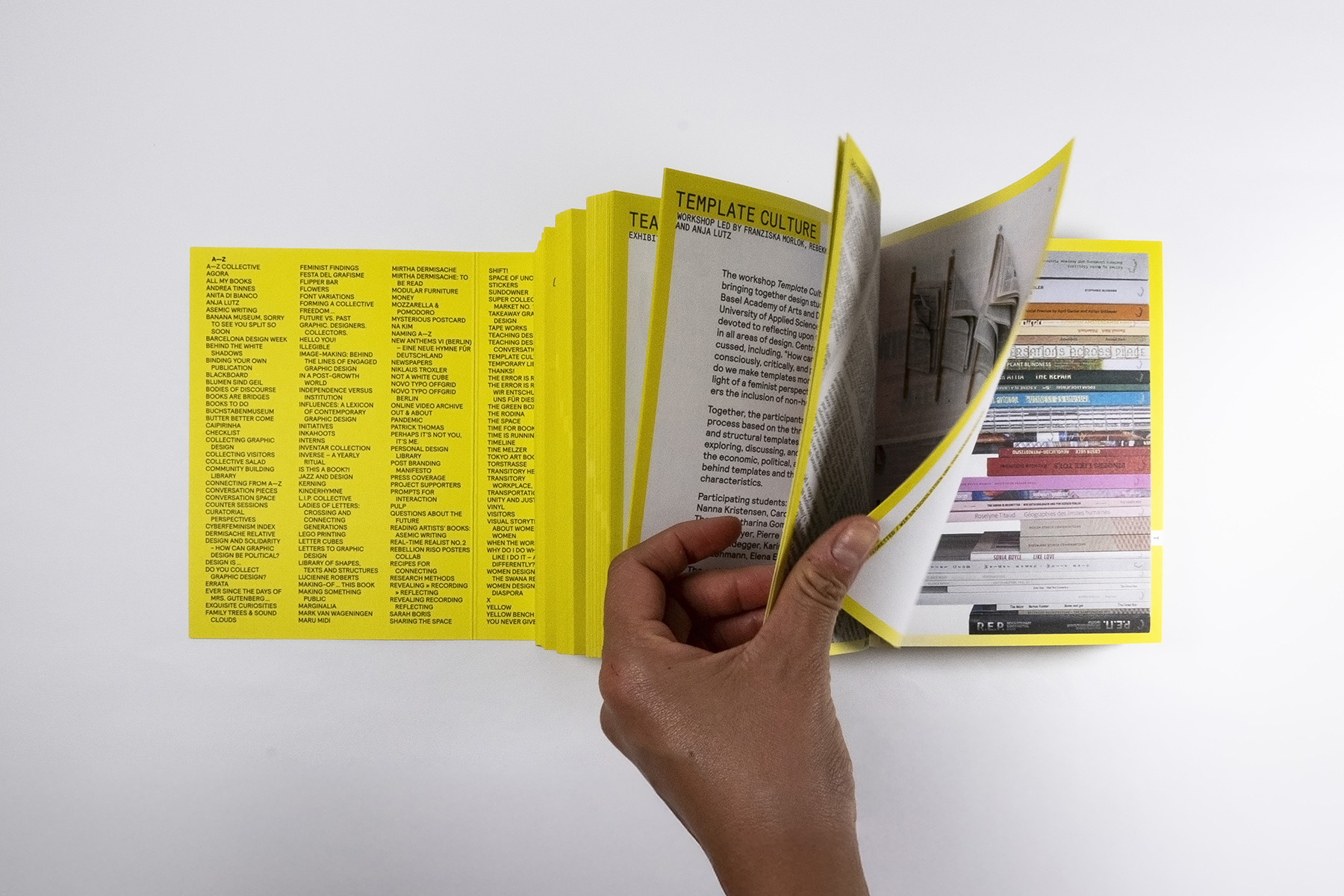
F: We can say A—Z has already built its own story: commissioning or supporting new work, fostering cultural exchange between professionals, articulating artistic and cultural gestures, and in some ways advocating this sphere beyond. Are there any experiences on the A—Z floor that are your dearest ones?
A: There have been many positive and unexpected outcomes that have reassured me to continue with this collaborative approach, and it is also very satisfying to realize how many of the invited designers have seized the opportunity to engage in a new project, or to execute something they had been contemplating for a while… Another thing that makes me very happy when I look back is realizing the broad spectrum of collaborations—the opportunity we have had to invite and engage with designers from diverse backgrounds, as well as different career stages, ages, and formations. That plurality remains a core value for the space.
Regarding your question, I have always felt strongly of the space as a point for people to come together and connect. These are two good examples of this: the Counter Sessions, a series of one-evening events followed by a bar night, where we could share experiences and interact over drinks. And the A—Z Collective, where a group of individuals ran the A—Z program for an entire year. Both initiatives broadened the concept beyond the visual aspects of Graphic Design.
F: Would you say there is an ideological impact related to A—Z, or is it more like a fertilizer?
A: I like the idea of a fertilizer… and of thinking that A–Z inspires other people and projects, that it radiates out… I feel that in an increasingly corporate and technological world—and Graphic Design has been significantly affected and changed by this—it is essential to keep the space “between”, a space in the margins, for unusual practices, for works with lower visibility, subtler nuances, and of course their human and interpersonal dimensions.
F: I can imagine it must be very satisfying and fun to be doing all of that, but of course, there must have been situations that challenged you personally, or moments that forced you to re-evaluate the whole initiative?
A: The collective and connecting initiatives I mentioned earlier were all turning points of sorts, where I felt the desire to change the concept or the framing of the space. The idea of Counter Sessions originated from a desire to engage more with visitors, beyond their initial visit to an opening, viewing an exhibition, and then leaving. And at another point, when I felt exhausted by being the one who wears the hat, the wish for the collective was born, where the responsibility would be shared. Another turning point was A—Z Out & About, where I wanted to be active beyond Berlin, and create a program that sends A—Z to manifest and collaborate in other countries.
You could say that A—Z in itself is a constant search and re-evaluation of how Graphic Design can stay relevant and engaging. And I am sure there will be more of these turning points driven just by the latest experience, whether that is empowering or challenging. Additionally, it has not been easy to complete the program without ongoing support, whether financial or structural. This remains a challenge, especially during periods when I feel less energetic.
F: Where do you want new things to go? What directions are you yourself looking at?
A: In addition to the interdisciplinary areas we have been able to showcase so far, I would still like to show others, such as moving graphics and, in particular, digital graphics experimentation that combines and interacts with physical bodies. Audio is another medium that I think is very exciting in combination with Graphic Design. And I can also think of research projects on historic design, and how we can relate it to a contemporary practice—a fascinating field.
When it comes to the general audience, I would love to welcome initiatives that address children or older people, and explore what Graphic Design has to offer for these demographic groups. A—Z was initially conceived as a two-year project and, at that point, the limited timeframe was a kind of trick to enable me to fully engage with the project, despite my heavy workload of designing and publishing books. Now, it has been six years of A—Z and here I dream about more and more to come…
On the Edges of Graphic Design from A—Z—∞ is available from Set Margins. Be sure to listen to our 2024 interview with Freek Lomme and read Regine Ehleiter’s essay Mirtha Dermisache’s Illegible Publications, our exclusive excerpt from a previous A—Z publication and exhibition!

